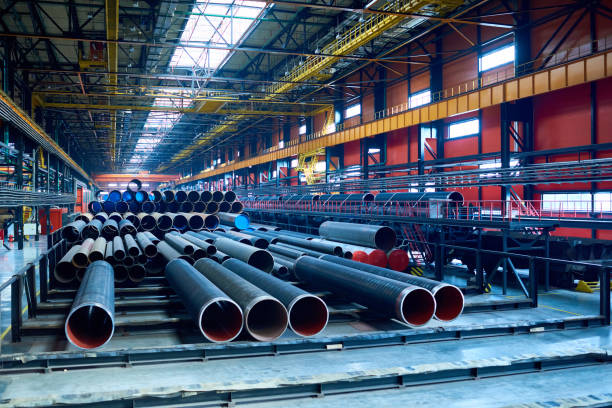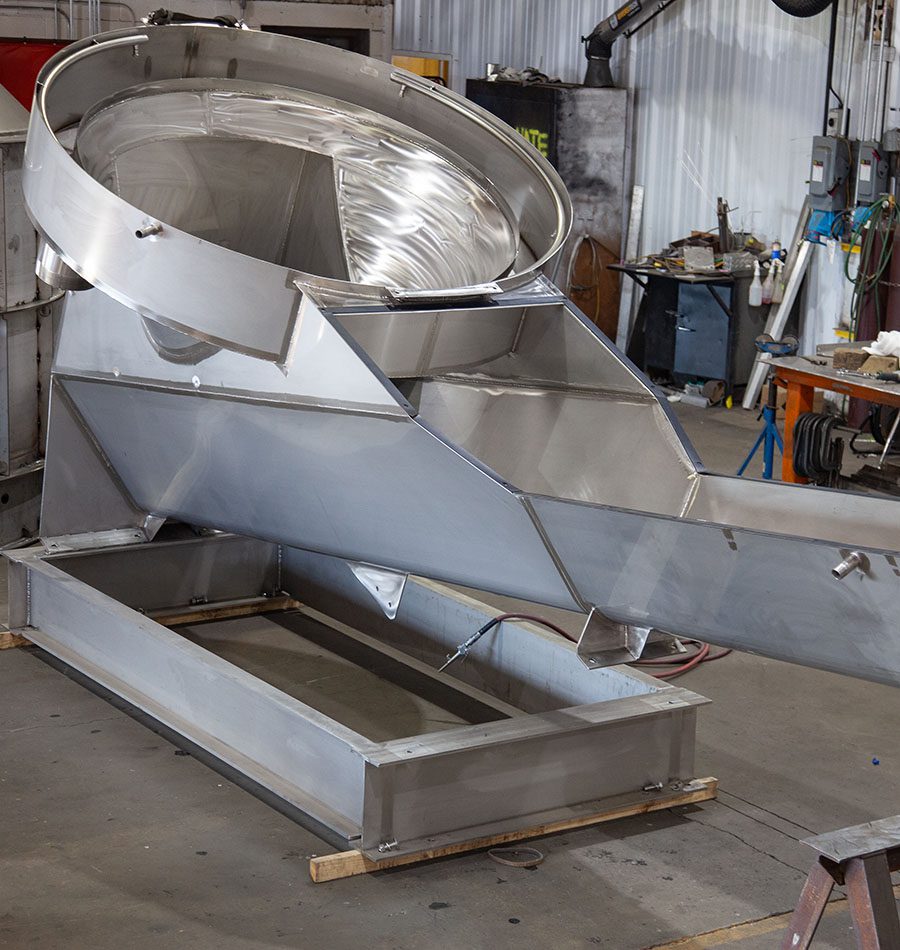Metal Fabrication Melbourne: Accuracy Design for All Needs
Metal Fabrication Melbourne: Accuracy Design for All Needs
Blog Article
Comprehensive Evaluation of Cutting-Edge Techniques in Steel Manufacture Sector
As the steel construction sector proceeds to evolve, the integration of advanced strategies has come to be essential for remaining competitive and satisfying the demands of contemporary manufacturing requirements. In this dynamic industry where innovation plays a crucial function, comprehending the subtleties of these sophisticated methods is not simply a choice yet a requirement for those looking to forge ahead in the ever-evolving world of steel construction.
Laser Reducing Improvements
In the world of steel manufacture, laser cutting improvements have actually transformed the accuracy and performance of steel shaping procedures. By harnessing the power of focused laser beam of lights, producers can now achieve unrivaled levels of precision when cutting with numerous sorts of metals. This modern technology makes it possible for complex styles to be performed with marginal product wastefulness, making it a cost-effective solution for sectors needing high precision parts.
One of the essential advantages of laser cutting is its capability to manage a variety of products, including stainless steel, light weight aluminum, and carbon steel, easily. The process generates clean, burr-free edges, removing the need for added ending up steps. The non-contact nature of laser cutting decreases the risk of product contamination, resulting in higher quality end products.
In addition, laser cutting makers can be configured to make swift, accurate cuts, considerably reducing manufacturing time compared to traditional reducing methods. This rate and accuracy make laser reducing specifically appropriate for mass manufacturing environments where effectiveness is paramount. As innovation continues to advance, laser cutting is positioned to play an increasingly important role in the steel construction sector.

CNC Machining Innovations
The development of CNC machining modern technologies has actually introduced a brand-new age of accuracy and efficiency in the steel construction industry. Computer System Numerical Control (CNC) devices have revolutionized steel manufacture by offering exceptional precision and repeatability in the production process. steel fixing. Among the crucial technologies in CNC machining is the integration of advanced software program systems that enable real-time surveillance and adjustments, bring about boosted efficiency and high quality control
In addition, the advancement of multi-axis CNC equipments has actually allowed for the manufacture of complicated steel components with elaborate designs that were formerly testing to create. These equipments can do a vast array of machining procedures, consisting of milling, boring, turning, and grinding, all with high levels of accuracy.
Moreover, the consolidation of automation and robotics in CNC machining has structured manufacturing procedures, minimized preparations, and reduced the margin of error. This combination of advanced innovations not just improves efficiency but also makes certain regular quality across all fabricated steel components. In conclusion, CNC machining advancements proceed to drive developments in the steel manufacture industry, establishing new standards for accuracy and performance.
Automated Welding Technologies
Automated welding modern technologies have revolutionized the steel manufacture market, boosting effectiveness and accuracy in the welding procedure. These cutting-edge technologies make use of computer-controlled systems to automate the welding procedure, resulting in greater efficiency levels and enhanced weld top quality. One of the essential benefits of automated welding is the capacity to perform complicated welds with constant accuracy, decreasing the possibility of errors and rework.
Robot welding systems go to the forefront of automated welding technologies, using unequaled speed and accuracy. These systems can take care of a vast look at here array of welding tasks, from simple to detailed, effortlessly (metal fabrication melbourne). By making use of sophisticated sensors and software, robot welders can adapt to variants in material and joint geometry, ensuring an attire and reputable weld
Additionally, automated welding innovations enhance workplace safety and security by decreasing the direct exposure of human welders to unsafe fumes and extreme warm. As the steel construction sector continues to develop, incorporating automated welding technologies look at here now will be crucial for business aiming to stay competitive and satisfy the growing demands for high-quality bonded products.
Robotics Combination in Manufacture
Making use of robot systems in manufacture procedures has actually ended up being an essential technique for boosting efficiency and precision in modern manufacturing atmospheres. Robotics assimilation in steel manufacture offers a myriad of advantages, consisting of enhanced performance, enhanced quality assurance, and boosted precaution. These innovative robot systems are outfitted with sophisticated sensors and shows abilities, allowing them to perform complex jobs with a high level of precision and repeatability.
Among the crucial advantages of robotics combination in steel construction is the capability to automate recurring jobs, such as product handling, reducing, welding, and setting up procedures. This not only accelerates production cycles yet likewise decreases the risk of human mistake, bring about higher general item high quality. Additionally, robotics can run 24/7, substantially boosting production result and meeting limited task target dates.

3D Printing in Steel Production
Having actually revolutionized the steel fabrication industry via robotics integration, the burgeoning expedition of 3D printing in steel manufacturing is positioned to further breakthrough the world of modern production techniques. 3D printing, also referred to as additive manufacturing, offers extraordinary style liberty and intricacy, making it possible for the creation of view complex steel structures that were formerly unattainable through typical manufacturing approaches. By utilizing computer-aided layout (CAD) software, producers can exactly control the layer-by-layer deposition of steel product, leading to get rid of improved performances and geometries.
One of the essential benefits of 3D printing in steel production is its capacity to reduce product waste substantially. Unlike subtractive manufacturing processes where excess product is cut away, 3D printing just uses the required quantity of steel needed for the final part. This efficiency not only causes cost savings however likewise aligns with lasting manufacturing techniques by minimizing environmental influence.
In addition, 3D printing makes it possible for fast prototyping and customization, permitting the manufacturing of little batches of intricate steel elements with short preparations. As the technology remains to grow and come to be a lot more easily accessible, its assimilation into mainstream steel manufacture processes is expected to drive advancement and performance throughout the sector.
Conclusion
In final thought, the steel manufacture sector has seen significant developments in techniques such as laser cutting, CNC machining, automated welding, robotics assimilation, and 3D printing. These innovative modern technologies have actually transformed the way steel items are manufactured, causing raised efficiency, precision, and cost-effectiveness. Continued financial investment in these innovative methods is crucial for the market to remain competitive and satisfy the demands of modern manufacturing processes.
As the steel fabrication industry proceeds to progress, the assimilation of innovative strategies has actually come to be vital for remaining affordable and fulfilling the demands of contemporary production standards.One of the key benefits of laser cutting is its capacity to take care of a broad array of products, including stainless steel, light weight aluminum, and carbon steel, with simplicity.Automated welding modern technologies have actually transformed the steel fabrication sector, boosting effectiveness and accuracy in the welding procedure.Having actually revolutionized the steel construction sector with robotics assimilation, the expanding expedition of 3D printing in steel manufacturing is positioned to further development the realm of modern production methods.In conclusion, the steel fabrication market has seen considerable advancements in strategies such as laser cutting, CNC machining, automated welding, robotics integration, and 3D printing.
Report this page